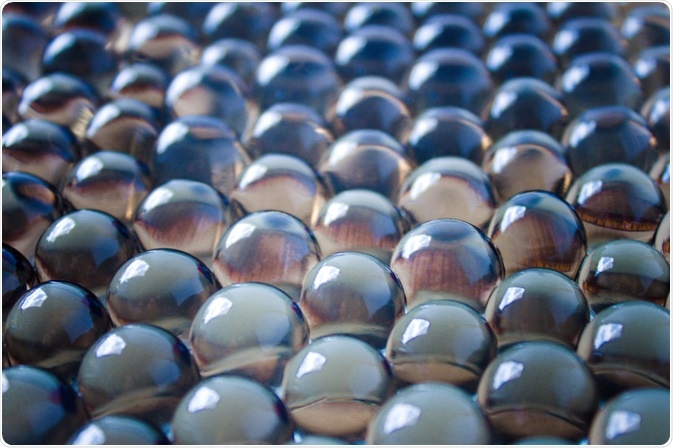Hydrogels can be used in biomedical applications by offering a moist, adjustable environment for cells.

Image Credit: Alexa_Space/Shutterstock.com
The ability to modify their physicochemical properties means wound healing can be optimized using bioactive hydrogels, an application that has been further explored in the past decade. This is seen as an important field to develop with the current aging population.
How hydrogels work
Wound dressings are designed to facilitate closure of the wound, promote healing, and minimize the chance to scar formation.
The benefit of hydrogels, compared to other wound dressings such as foam and membrane, is that they can allow for a moist environment, soak up tissue exudates, facilitate oxygen movement in and out of the wound area, and keep the wound surface cool to minimize pain.
The hydrogels are polymeric, which means they are made from synthetic polymers such as thermoresponsive poly(N-isopropyl acrylamide) (PNIPAAm), derivatives of poly(ethylene glycol) PEG, and polyesters.
The polymers create an organized network by forming cross-links, and water causes the networks to swell. The swelling covers the wound area and creates a scaffold on which cells can regenerate. Furthermore, hydrogels can be injected into a wound site to allow for in situ encapsulation of drugs and filling of irregular wound spaces.
The hydrogels need to be biodegradable, to allow for them to be removed once the wound has healed. The degradation should be possible via hydrolysis or enzyme-facilitated degradation. Many hydrogels that have been developed for tissue engineering are bioinert, meaning they do not respond when faced with biological tissue and therefore present problems for wound healing, which benefit from bioactivity.
Bioactivity in hydrogels
Bioactivity can be added to hydrogels in the form of growth factors and peptides specific to the target tissue. For example, the transforming growth factor β superfamily can promote bone and cartilage regeneration in a wound.
These can also allow for the controlled release of painkillers, such as ibuprofen or morphine, which is desirable for extensive burns, infected wounds, and palliative care.
Another method in which hydrogels become bioactive is via direct conjugation to the hydrogel, as opposed to via controlled release from nearby vessels. The conjugation method creates a presentation of bioactive cues in situ and minimizes abnormal effects that can result from biomolecule diffusion.
An important requirement for hydrogels is that they have antibacterial activity. This can be overcome with bioactive antibacterial agents in the hydrogel, or by constructing the hydrogel with materials that have inherent antibacterial activity, such as chitosan.
Novel developments include incorporations of nanoparticles with antimicrobial activity by the inclusion of silver or zinc oxide, for example, within the cross-links.
Limitations and how to solve them
Bioactive hydrogels are far from perfect. The type of bioactivity in the hydrogel can be an issue, with biomolecule conjugation being done with linker reactions that can cause side reactions with naturally abundant functional groups found on biomolecules, in addition to often containing cytotoxic reagents. This can restrict the biomolecule selection and make certain bioactive hydrogels incompatible with certain wound tissues.
A chemical method known as alkyne-azide click chemistry has been proposed as a solution for overcoming the issues of biomolecule conjugation. Alkyne-azide click chemistry has a higher specificity and the alkyne or azide moieties are not susceptible to side reactions, thereby overcoming the main challenge of linker reactions.
Hydrogels can be injected, but injections can cause certain complications. If the injected hydrogel lacks good elasticity, external mechanical forces may lead to deformity or damage. This can, in turn, shorten the hydrogel’s lifespan, cause infection, and trigger other inflammatory processes.
Injectable hydrogels with bioactivity that facilitates self-healing could help overcome this. These have been created, with great success in scavenging free radicals, electroactivity, antibacterial activity, and biocompatibility.
One of the major areas of hydrogel use that requires more investigation is how these can be applied to chronic wounds. Bioactive hydrogels remain cost-inefficient, which limits their widespread use, and their reproducibility, in terms of using natural products, is questionable.
Further Reading